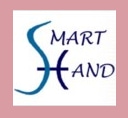Mind Hacks has put us onto the SmartHand project – it is truly ambitious but if it works will be terrific for amputees (at least I think it will – one never does know what unexpected and unwanted things emerge when we are messing this seriously with the brain – but it looks GREAT).
Go here to the SmartHand website, here for Mind Hack’s post on it: Inhabiting a robot hand, and here for the BBC video on it: New robotic hand ‘can feel’. Good stuff.
The SmartHand Project
The overall scientific objective of the SmartHand project is to develop an intelligent artificial hand that looks and feels like a real hand. This is a challenging and visionary goal. However, recent development in the field and several converging scientific areas makes it possible to state that the perfect artificial hand is no longer a fantasy. SmartHand aims to integrate recent advances in nanobioscience, cognitive neuroscience and information technologies in order to develop such an intelligent artificial prosthetic hand with all basic features displayed by a real one.
The SmartHand project is divided into two major approaches, i.e. long- and short-term research efforts, respectively. In long-term, a highly advanced neural interface will be developed and different studies will be conducted to achieve a better knowledge in cognitive neuroscience, and thus also contribute to the field of nerve injuries in general. In short-term research efforts will target the development of a hand prosthesis system, namely the SmartHand, that directly could be used by hand amputees. This system will consist of a highly dexterous prosthetic hand controlled by the remaining muscles in the forearm stump. It will be equipped with artificial sensibility put into effect by artificial skin relaying sensation to a tactile display. A cognitive software training system will be developed to tune the SmartHand to the user and to train the subject. Furthermore, numerous qualitative and quantitative studies will be performed with amputees. Since the SmartHand project will take advantage from the outcomes of the previous major projects ( The Artificial Hand, CyberHand, and FreeHand ), it will substantially enhance functionality, controllability, and acceptability of hand prostheses and nerve injuries in general.



